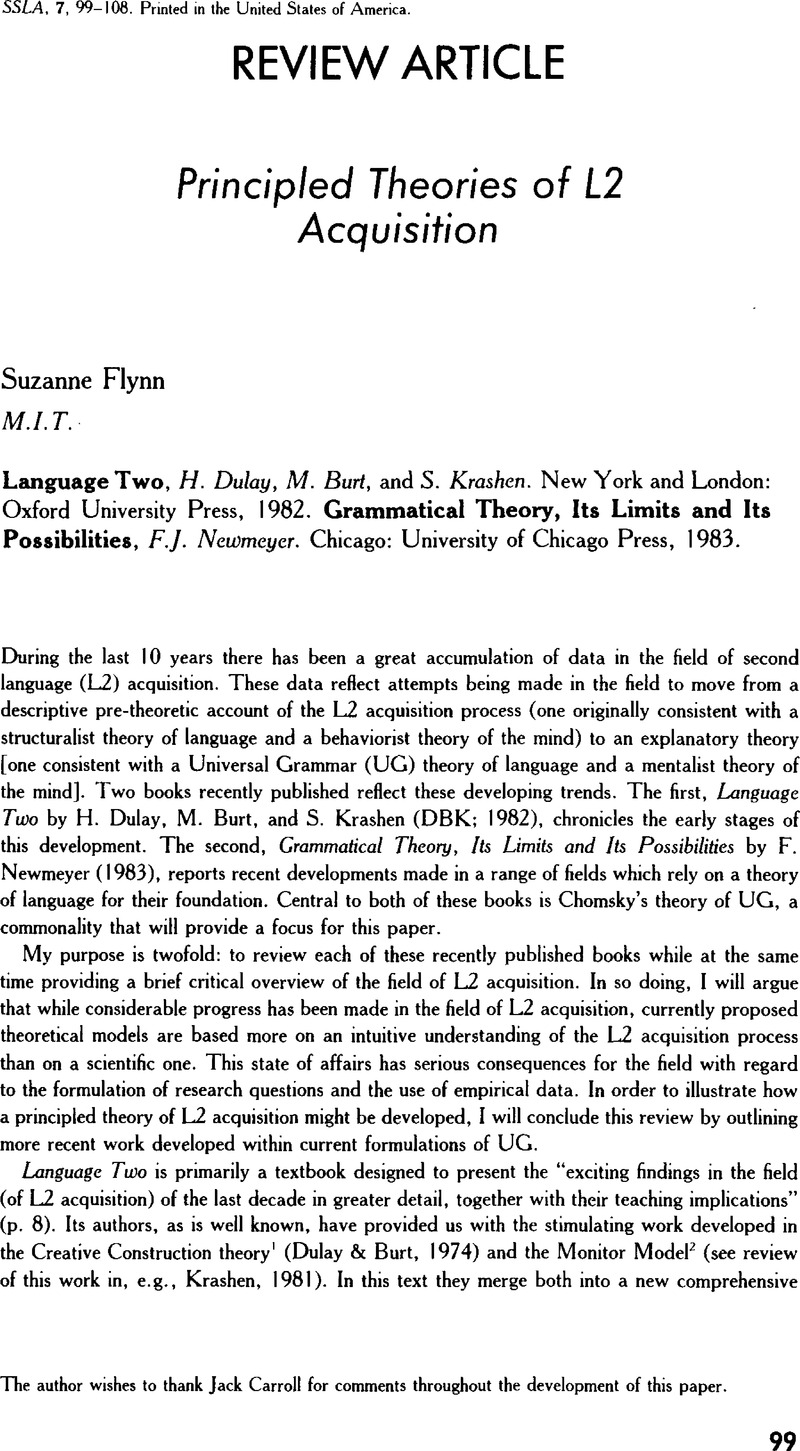Crossref Citations
This article has been cited by the following publications. This list is generated based on data provided by Crossref.
Flynn, Suzanne
1987.
Contrast and Construction in a Parameter‐Setting Model of L2 Acquisition.
Language Learning,
Vol. 37,
Issue. 1,
p.
19.
VanPatten, Bill
1988.
CHILD LANGUAGE: A LANGUAGE WHICH DOES NOT EXIST?Willem Kaper. Dordrecht: Foris, 1985. Pp. i + 125. $17.50..
Studies in Second Language Acquisition,
Vol. 10,
Issue. 1,
p.
76.
Gass, Susan M.
1988.
Linguistic Theory in Second Language Acquisition.
Vol. 8,
Issue. ,
p.
384.
Gass, Susan
1996.
Handbook of Second Language Acquisition.
p.
317.
Flynn, Suzanne
1996.
Handbook of Second Language Acquisition.
p.
121.
Rothman, Jason
Iverson, Michael
and
Judy, Tiffany
2011.
Introduction: Some notes on the generative study of L3 acquisition.
Second Language Research,
Vol. 27,
Issue. 1,
p.
5.
Slabakova, Roumyana
Leal, Tania
Dudley, Amber
and
Stack, Micah
2020.
Generative Second Language Acquisition.





